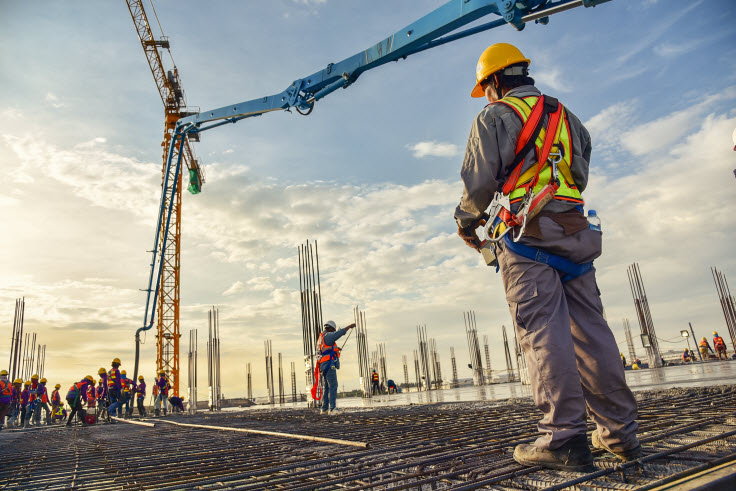In this blog series, we’ll be asking industry experts ‘what must a construction safety program include to be effective?’ Construction is one of the most danger-prone industries there is – responsible for approximately 1 in 5 workplace fatalities. How can construction companies successfully create a safety program and achieve buy-in? We’ve spoken with industry professionals Steve Mellard, National Safety Director at Anning Johnson, and Desire’e Ropel, Safety Manager at Hermanson to get an insider look into how to manage safety in the construction industry.

The construction industry is responsible for more workplace deaths than any other industry. This makes implementing a robust health and safety program extremely important. Not only is there a concern for the well-being of employees – but losing money is also a risk for companies that do not take their health and safety seriously. There is a large financial burden that is also at play: in the United States, it has been estimated that employers pay nearly $1 billion per week for direct worker’s compensation costs alone, including workers’ compensation payments, medical expenses, and costs for legal services.
Successfully adopting a health and safety program can significantly ease these costs. For example, a study conducted in Ohio of small and medium enterprises showed that after a health and safety program was implemented to fit with OSHA standards the following benefits were accrued:
- Claims decreased by 52%
- Cost per claim decreased by 80%
- Average time lost per claim decreased by 87%
- Claims (per millions of dollars of payroll) decreased by 88%
But having a safety program in place isn’t enough. What must a construction safety program actually include to be truly effective?
A Safety Program Needs To Be Tailored to Your Company
A safety program that simply covers the basic OSHA standards and requirements will not be enough to be truly effective. The construction industry spans such a large number of activities that one type of policy cannot cover all of the needs of every organization. National Safety Director at Anning Johnson, Steve Mellard, encourages construction companies to create safety programs that are specifically tailored to the type of work they do. Only then can the program be truly effective.
A Construction Safety Program Needs Employee Buy-In
Having an all-encompassing safety program is certainly important, but if this program isn’t followed or enforced, it has little meaning. Desire’e Ropel, Safety Manager at Hermanson points to the importance of buy-in from all employees. From the highest level of management to front-line employees, a safety program must have buy-in for it to be successful. Getting employees excited about change is not necessarily an easy task (and we will cover employee buy-in in an entire article as part of this series). Laying out the vision, managing resistance early, and offering rewards and incentives are important first steps to achieving company-wide buy-in of your company’s safety program.

30+ Audit and inspection checklists free for download.
A Safety Program Needs Strong Leadership
Going hand-in-hand with employee buy-in is having a strong leadership team to enforce the safety program. For the program to be successful, leadership must be fully committed to the safety program and lead by example. Leadership must also be prepared to enforce the safety program and nip any employee resistance in the bud. This is a crucial ingredient in creating a safety-oriented work culture.
While implementing a successful safety program involves more than an employee handbook, it is the responsibility, and the benefit, of every construction company to take these steps. And be sure to remember that aside from saving your company money, a safety program also comes with other benefits, including:
- Improvements in quality and production
- Increased employee morale
- Gains in employee recruiting and retention
- A more favorable image and reputation among customers, suppliers, and the community
Other blogs in this series:
4 Considerations When Improving Safety In The Construction Industry
How Leadership Style Affects Safety Performance in Construction
Boosting Employee Buy-In To Your Safety Culture and Construction Safety Program
7 Significant Safety Issues Facing The Construction Industry
#1 Safety Issue In Construction As Told By Top Safety Management Industry Leaders



